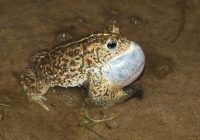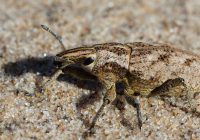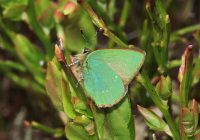Dr Phil Smith’s Wildlife Notes
April 2015
An almost constant refrain in my April notes since 2007 has been drought conditions in the dunes. Persistent high pressure meant no measureable rain fell between 4th and 25th April. This pattern is now well established, analysis of spring rainfall data from the Ainsdale National Nature Reserve weather station revealing a statistically significant decline since 2000.
While most people may not notice, these dry springs are certainly having an impact on our wildlife, most notably the iconic Natterjack Toad which always spawns in shallow water and is particularly susceptible to drought. Thus, although I counted 43 Natterjack spawn strings on the southern part of Birkdale Green Beach early in the month, most were lost as the water quickly dried up. Other sites reported the same problem, an exception being one of the scrapes at Ainsdale Local Nature Reserve dug a couple of years ago. Here, adequate water attracted lots of Natterjacks, a late evening visit on 10th enabling me to photograph several calling males. Getting close to a group of the noisiest amphibians in Europe going full blast is painful to the ears!
As usual in April, bird migration really got going, reflected in many reports of Ring Ouzels along the coast. On 5th, I just missed two at Freshfield Dune Heath but, later in the day, Cabin Hill produced 13 Teal, 40 Meadow Pipits, a Goldcrest and the now uncommon Redpoll, as well as remaining winter visitors such as Snipe and Jack Snipe.
An American Laughing Gull wintered at New Brighton but started visiting Seaforth Nature Reserve, so I went down on 7th to try my luck. Sure enough, soon after I arrived, the gull turned up, a new “tick” for me. An elegant adult Little Gull was also good to see but this smallest of the World’s gulls no longer gathers at Seaforth in the large flocks of former years.
The following day, Marshside produced my first Willow Warbler of the spring, nine Sand Martins, a Swallow, 46 Avocets and, unexpectedly, another Little Gull, this time in first-year plumage. It was to spend a further three weeks on Junction Pool. Another visit to this excellent RSPB reserve on 26th added my first sightings of Whitethroat, Reed Warbler and House Martins, as well as 22 Gadwall and at least 500 Pink-footed Geese, which should have been on their way back to Iceland. Most exciting, however, was a male Redstart which another birder pointed out at Hightown dunes on 21st. I had great views of this superb bird shivering its red tail in the approved manner. Nearby, a Grasshopper Warbler was singing, while a ploughed field off Gorsey Lane had 30 smart White Wagtails, the continental form of our familiar Pied Wagtail.
Spring insects were also a feature of the dunes, stocky Vernal Mining Bees being widespread, while I also photographed a Large Thistle Weevil on Birkdale Green Beach. Impressive numbers of Peacocks suggested favourable hibernation conditions last winter. On Freshfield Dune Heath, Ron Moyes was trying to lure Emperor moths using a commercial pheromone lure which mimics the scent given off by the female. Eventually, two spectacular males arrived at high speed, homing in to land on the lure.
Due to cold dry conditions, duneland flowers did not appear in last April’s abundance but the colourful Dune Pansy and Heath Dog-violet were showing well by the end of the month, while the rare coastal form of Groundsel, which botanist Mike Wilcox argues is a full species, was again prominent on the Green Beach.
Trevor Davenport persuaded me away from the coast on 22nd to visit White Coppice on the edge of the West Pennine Moors. Twenty years ago, I had seen a Green Hairstreak butterfly there, so off we went, more in hope than expectation. A gully on the hillside had plenty of Bilberry, the butterfly’s food-plant and, within seconds, saw the first of several of these strikingly-marked insects. A further bonus was the almost mythical Cuckoo, a declining species now rarely seen in our area. Having learnt as a schoolboy how to mimic the call, we soon had it perched in a tree a few yards away.




